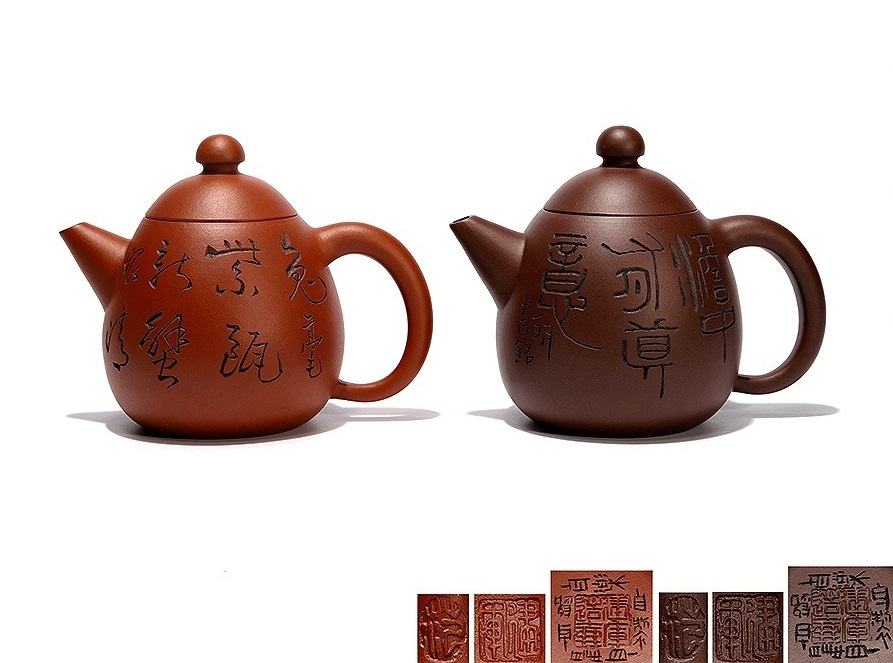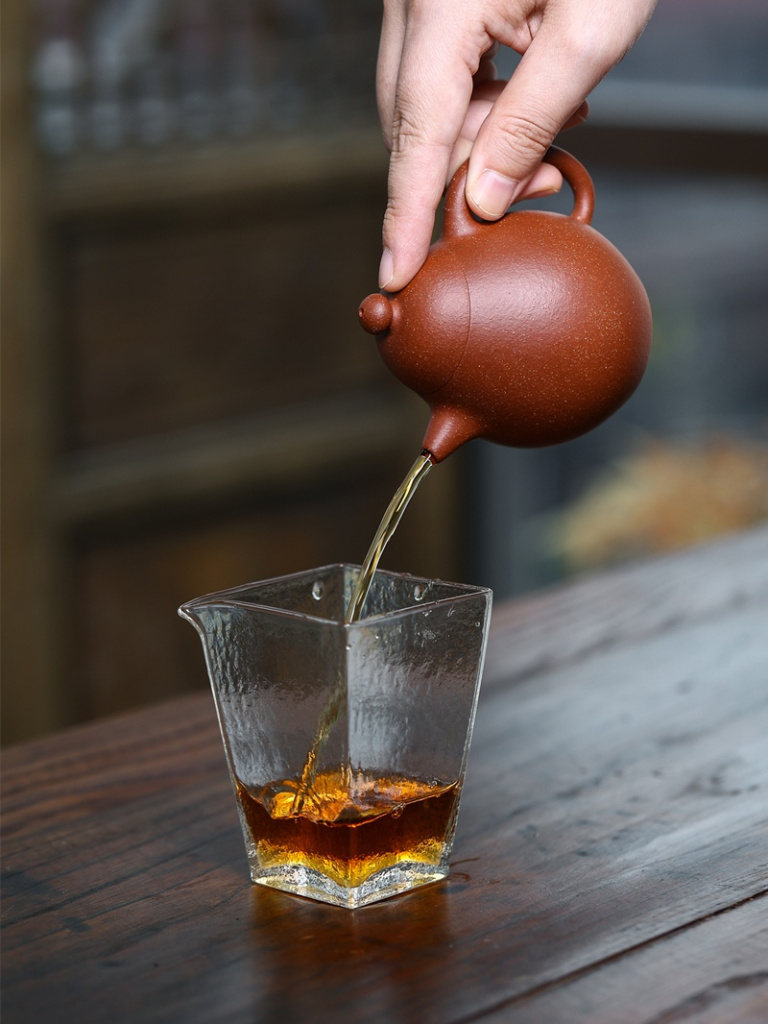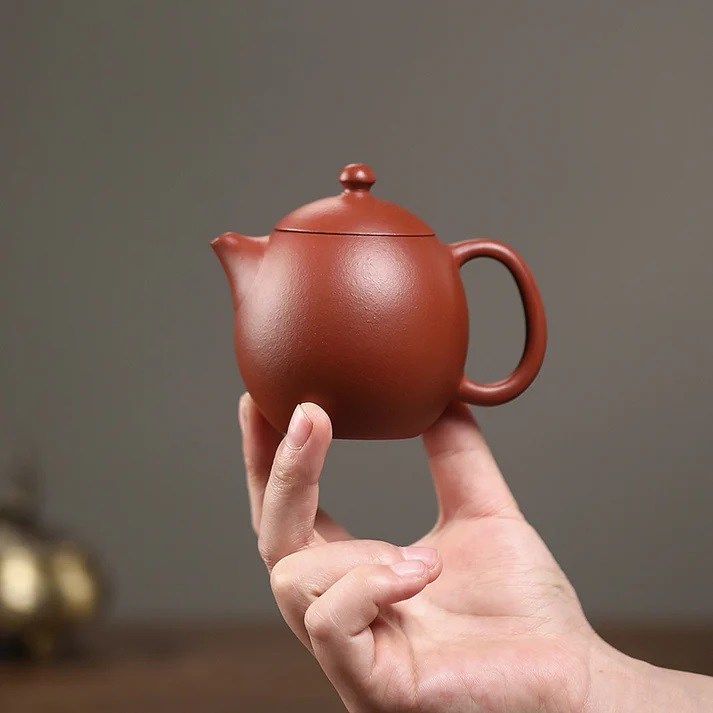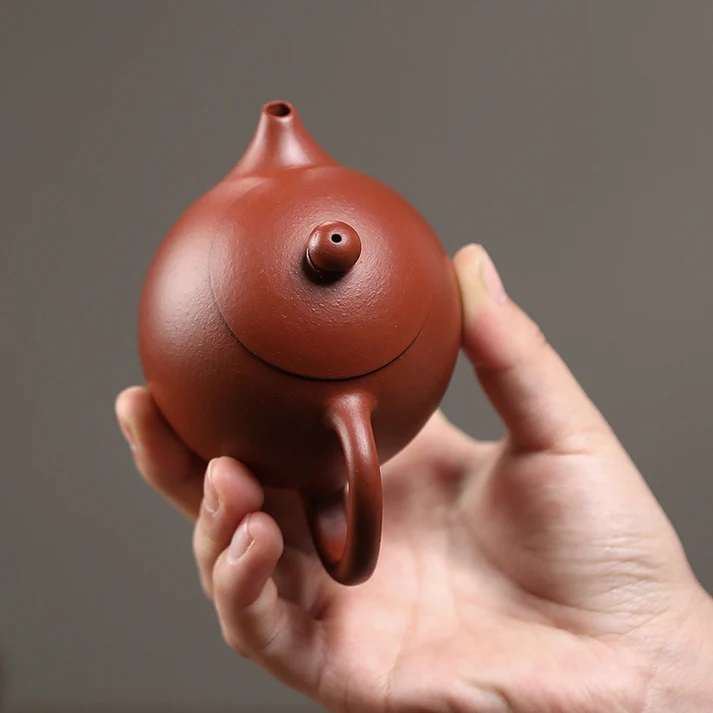Longdan Teapot (龙蛋壶, Lóng dàn hú) – "Dragon Egg": History, Features and Cultural Significance
The Longdan teapot (龙蛋壶, pinyin: Lóng dàn hú) is one of the classic shapes of Chinese teapots, which originated in the Qing Dynasty (1644–1912). In Chinese culture, the dragon is a sacred creature symbolizing strength, wisdom, and prosperity. The shape of the teapot, resembling a dragon's egg, carries a deep meaning: it symbolizes rebirth, prosperity, and good wishes.
History of origin
The Longdan teapot was first mentioned in the Qing Dynasty, when Chinese craftsmen began experimenting with new teapot shapes and designs. The name "Longdan" translates as "dragon's egg", reflecting its round, egg-shaped form. In Chinese mythology, the dragon is one of the most revered creatures, symbolizing strength, wisdom, and prosperity. The egg-shaped Longdan teapot symbolizes the beginning of a new life, growth, and prosperity. This makes it not only a functional teapot, but also a kind of amulet, bringing good luck and prosperity.

Design features
The Longdan teapot is characterized by its compact and elegant shape, which makes it convenient to use and attractive to collectors. Key design features include:
1. Body shape. The body of the teapot has an egg-shaped form, which gradually narrows towards the top. This rounded shape is not only aesthetically pleasing, but also functional, as it helps to distribute heat evenly when brewing tea.
2. Handle. The handle of the kettle is simple and comfortable, making it easy to use. It fits harmoniously with the rounded shape of the body, adding balance and elegance to the kettle.
3. Spout. The spout of the teapot is short and straight, which makes it easy to control the flow of water when pouring tea. Its shape also emphasizes the compactness and elegance of the teapot.
4. Lid. The lid of the teapot is small and fits tightly to the body. There is often a bead on top of the lid, which serves not only as a decorative element, but also as a convenient handle for opening.
5. Size : Longdan teapots are usually small in size (height about 10 cm, width 12.2 cm), making them ideal for individual use or for small tea ceremonies.
Cultural significance
The egg symbolizes the birth of new life and renewal, and the dragon symbolizes strength and protection. The Longdan teapot combines these elements, expressing a wish for happiness and harmony. Such teapots were popular among Chinese scholars and nobles, who valued not only functionality, but also the symbolism of the form.
The Longdan teapot, inspired by the dragon, has become a symbol of these auspicious qualities. The Longdan teapot reflects the importance of harmony and balance in Chinese culture. Its rounded shape and graceful lines emphasize the aesthetics of simplicity and naturalness that are highly valued in Chinese art.
Interesting facts
- Auspicious Symbol: The Longdan teapot is considered a symbol of good luck and prosperity, and is considered a kind of amulet that brings good luck and prosperity. Its dragon-like shape makes it a popular gift for holidays and important occasions.
- Qing Dynasty: The Longdan teapot dates back to the Qing Dynasty, when Chinese teapot makers began experimenting with new teapot shapes and designs. This period is considered the golden age of Chinese tea culture. In ancient China, these teapots were often given as gifts, symbolizing good wishes.
- Compact: The small size of the Longdan teapot makes it ideal for individual use. It is easy to handle and suitable for brewing various types of tea. Due to its shape, the Longdan teapot easily retains heat, helping to best reveal the flavor of the tea.
Significance in modern culture
In the modern world, the Longdan teapot continues to be popular among tea lovers and collectors. Its unique shape and auspicious symbolic meaning make it not only a functional object, but also a work of art. The Longdan teapot is often used in tea ceremonies, where it adds elegance and sophistication.

The Longdan teapot has also become a collector's item. Its exquisite design and connection to Chinese mythology appeal to both tea lovers and art lovers. In modern culture, it also symbolizes the connection between tradition and modernity, reminding us how ancient symbols can be reinterpreted in a new context.
Conclusion
The Longdan teapot (龙蛋壶, Lóng dàn hú) is more than just a teapot; it is a symbol of Chinese culture. Inspired by the dragon and egg, its shape symbolizes new beginnings, growth, and prosperity. Created during the Qing Dynasty, this teapot continues to inspire and delight tea lovers around the world. In modern culture, it remains an important element that connects the past and the present, and reminds us how ancient traditions can be reimagined in a new context. The Longdan teapot is not only a functional object, but also a work of art that brings harmony and good fortune to the home.
- Comments
- Vkontakte






